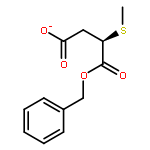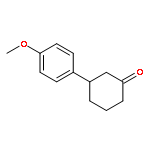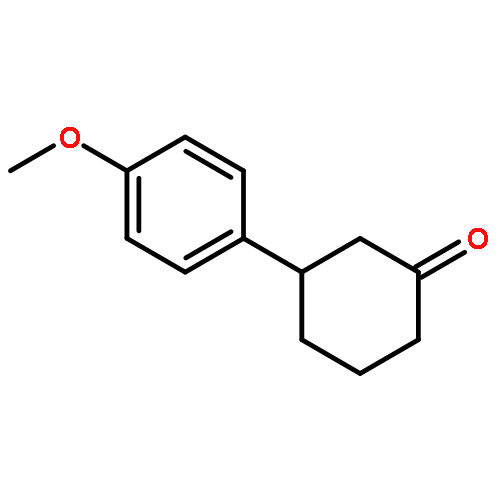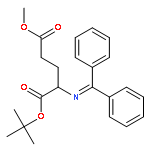Co-reporter:Edwin D. Lephart, Mark J. Acerson, Merritt B. Andrus
Bioorganic & Medicinal Chemistry Letters 2016 26(14) pp: 3258-3262
Publication Date(Web):15 July 2016
DOI:10.1016/j.bmcl.2016.05.068
Resveratrol (RV) 1, a plant polyphenol, has proven effective in commercial products yet drawbacks include low bioavailability due to rapid metabolism. Structural modifications have led to a 4′-acetoxy analog 2 (4AR) now produced using a selective one-step esterification reaction. The one-step synthesis is shown together with expression of skin genes using human dermal models to establish 4AR 2 benefits to skin health. 4AR 2 at 1% in qPCR experiments using a human skin model significantly increased gene expression of the anti-aging factor, SIRT 1 by over 3.3-fold, extracellular matrix proteins collagen III, IV, elastin and tissue inhibitors of metalloproteinases (TIMP 1, 2), anti-oxidants CAT, LOX, superoxide dismutase (SOD 1, 2), metallothioneins (MT1H, MT1H), skin aging biomarkers fibrillin (FBN1), laminin (LAMB1), proliferating cell nuclear antigen (PCNA), skin growth factors (HBEGF, IGF1, NGF and TGF). 4AR 2 also decreased gene expression of inflammatory and skin-aging molecules (IL-1, IL-6, IL-8, COX-2, TNGRSF) and S100 calcium binding proteins A8, A9. These findings suggest that 4AR 2 has potential for topically treatment and prevention of skin aging.
Co-reporter:Mark J. Acerson, Brian S. Bingham, Curtis A. Allred, Merritt B. Andrus
Tetrahedron Letters 2015 Volume 56(Issue 23) pp:3277-3280
Publication Date(Web):3 June 2015
DOI:10.1016/j.tetlet.2015.02.071
Terpene based mimics of the anti-cancer agent (−)-englerin A have been designed and produced from (+)- and (−)-bornyl acetate and (+)-fenchol. A key remote CH2 oxidation reaction was developed using chromium(VI) oxide in acetic acid (115 °C) added in two portions to access keto-acetate intermediates in good yields (40–70%). Other known C–H activation conditions for this methylene oxidation were ineffective. Standard acylation steps installed the glycolate and cinnamate esters leading to the desired mimics. Preliminary cell testing with renal cancer cells show less potent activity compared to englerin A.
Co-reporter:Mark J. Acerson, Merritt B. Andrus
Tetrahedron Letters 2014 Volume 55(Issue 3) pp:757-760
Publication Date(Web):15 January 2014
DOI:10.1016/j.tetlet.2013.12.019
Co-reporter:Mark J. Acerson, Kimberly M. Fabick, Yong Wong, Crystal Blake, Edwin D. Lephart, Merritt B. Andrus
Bioorganic & Medicinal Chemistry Letters 2013 Volume 23(Issue 10) pp:2941-2944
Publication Date(Web):15 May 2013
DOI:10.1016/j.bmcl.2013.03.046
The 4′-ester analog of the disease preventative resveratrol 1 (RV), 4′-acetyl-RV 2 along with 4′-pivaloate 13 and benzoate 14 RV were synthesized. The previously developed palladium catalyzed decarbonylative Heck coupling was used to assemble the stilbene core together with 3,5-dibenzyl protected phenol intermediates that allowed for efficient coupling and deprotection using boron trifluoride etherate. Studies with Long-Evans rats were performed to establish safety, toxicity, and behavioral parameters. In addition, the Porsalt forced-swim test was used to demonstrate anti-depressant activity.
Co-reporter:Thomas C. Cook, Merritt B. Andrus, and Daniel H. Ess
Organic Letters 2012 Volume 14(Issue 23) pp:5836-5839
Publication Date(Web):November 19, 2012
DOI:10.1021/ol3026582
Density functional theory was used to model glycinate enolate binding and enantiomeric allylation transition states mediated by the cinchonidinium phase-transfer catalyst 2. Transition states show oxy-anion-ammonium interactions in contrast to π-face interactions in the ground states. The details of stereoselectivity are described within the quaternary ammonium-tetrahedron face model.
Co-reporter:Ziniu Zhou, Merritt B. Andrus
Tetrahedron Letters 2012 Volume 53(Issue 34) pp:4518-4521
Publication Date(Web):22 August 2012
DOI:10.1016/j.tetlet.2012.06.010
The synthesis of naphthyl substituted malonyl-derived and pyridine-based bisoxazolines and their applications in the asymmetric allylic oxidation of cyclohexene with t-butyl p-nitroperbenzoate have been performed with much improved reactivity (75% yield) while maintaining very good enantioselectivity (85% ee). A 1-naphthyl group as the side chain of the oxazoline ligand was found to be optimal. Correlations between the nature of the substituents on the bisoxazolines and the reactivity/selectivity have been established. Tridentate pyridylbisoxazoline ligands with naphthyl groups were also synthesized and employed.
Co-reporter:Michael A. Christiansen, Merritt B. Andrus
Tetrahedron Letters 2012 Volume 53(Issue 36) pp:4805-4808
Publication Date(Web):5 September 2012
DOI:10.1016/j.tetlet.2012.06.052
An efficient route to (Z)-(8-benzyloxy-8-oxooct-3-en-1-yl)triphenylphosphonium iodide, or BOTPPI, is disclosed, complete with full experimental details, NMR spectra, and HRMS data. BOTPPI serves as a surrogate for (Z)-(8-methoxy-8-oxooct-3-en-1-yl)triphenylphosphonium iodide, or MOTPPI, a Wittig salt previously used in two 12-HETE syntheses. BOTPPI has the advantage over MOTPPI of being derived from a sequence for which every intermediate is UV-active and amenable to large-scale chromatographic purification. A formal asymmetric total synthesis of 12-(S)-HETE is also reported, involving a stereoselective phase-transfer catalyzed (PTC) alkylation in its key step.
Co-reporter:Yong Wong, Gregory Osmond, Kenneth I. Brewer, Douglas S. Tyler, Merritt B. Andrus
Bioorganic & Medicinal Chemistry Letters 2010 Volume 20(Issue 3) pp:1198-1201
Publication Date(Web):1 February 2010
DOI:10.1016/j.bmcl.2009.12.006
4′-Ester analogs of the disease preventative agent resveratrol were synthesized and evaluated for their potential as anti-melanoma and pancreatic cancer agents. A decarbonylative Heck coupling was used to assemble the protected stilbene core structure. The 4′-acetate and the palmitoate analogs demonstrated selective activity with DM443 and DM738 cells over normal NHDF cells.
Co-reporter:Merritt B. Andrus, Yong Wong, Jing Liu, Kristin Beebe, Leonard M. Neckers
Tetrahedron Letters 2009 50(48) pp: 6705-6708
Publication Date(Web):
DOI:10.1016/j.tetlet.2009.09.091
Co-reporter:Merritt B. Andrus, Kaid C. Harper, Michael A. Christiansen, Meisha A. Binkley
Tetrahedron Letters 2009 50(31) pp: 4541-4544
Publication Date(Web):
DOI:10.1016/j.tetlet.2009.05.090
Co-reporter:Yudao Ma ;Chun Song;Changqing Ma;Zhijun Sun;Qiang Chai
Angewandte Chemie International Edition 2003 Volume 42(Issue 47) pp:
Publication Date(Web):8 DEC 2003
DOI:10.1002/anie.200352679
Chiral N-heterocyclic carbene ligands based on [2.2]paracyclophanes form complexes with rhodium. These catalysts can be used in the high-yielding and enantioselective asymmetric conjugate addition of arylboron compounds to cyclic and acyclic enones (see scheme).
Co-reporter:Yudao Ma ;Chun Song;Changqing Ma;Zhijun Sun;Qiang Chai
Angewandte Chemie 2003 Volume 115(Issue 47) pp:
Publication Date(Web):8 DEC 2003
DOI:10.1002/ange.200352679
Chirale N-heterocyclische Carbenliganden auf der Basis von [2.2]Paracyclophanen bilden Komplexe mit Rhodium. Diese können als Katalysatoren für die enantioselektive 1,4-Addition von Arylborverbindungen an cyclische und acyclische Enone eingesetzt werden (siehe Schema).

![Ethanone, 1-[4-(1-octynyl)phenyl]-](http://img.cochemist.com/ccimg/264200/264135-64-0.png)
![Ethanone, 1-[4-(1-octynyl)phenyl]-](http://img.cochemist.com/ccimg/264200/264135-64-0_b.png)








![Benzenepropanoic acid, a-ethoxy-4-[2-(10H-phenoxazin-10-yl)ethoxy]-,(aS)-](http://img.cochemist.com/ccimg/222900/222834-30-2.png)
![Benzenepropanoic acid, a-ethoxy-4-[2-(10H-phenoxazin-10-yl)ethoxy]-,(aS)-](http://img.cochemist.com/ccimg/222900/222834-30-2_b.png)


![Ethanone, 1-[4-(1-naphthalenyl)phenyl]-](http://img.cochemist.com/ccimg/216600/216576-92-0.png)
![Ethanone, 1-[4-(1-naphthalenyl)phenyl]-](http://img.cochemist.com/ccimg/216600/216576-92-0_b.png)

